Few-Grid-Point Simulations of Big Bang Singularity in Quantum Cosmology
Abstract
1. Introduction
2. 3D Space and Its Few-Grid-Point Representations
2.1. Grid Points in Conventional Hermitian Quantum Theory
2.2. Grid Points in Pseudo-Hermitian Quantum Theory
3. Quantum Big Bang as Exceptional Point
3.1. Alternative Unfolding Patterns
3.2. Vicinity of Quantum Big Bang
3.3. Unobservable Grid Points
4. Two-Grid-Point Simulation of Big Bang
4.1. Grid-Point Operator : Complex Symmetric Choice
4.2. The Role of Singular Values
5. More Grid Points
5.1. Four-Grid-Point Simulation of Big Bang
5.2. Six-by-Six Matrix
5.3. Eight-by-Eight Matrix
6. Another Class of Models: Asymmetric Real Matrices
6.1. Two-by-Two
6.2. Four-by-Four
6.3. Six-by-Six
7. Discussion
7.1. Classical vs. Quantum Gravity in Cosmology
7.2. Quantum Big Bang in Schematic Picture
7.3. Wheeler–DeWitt Equation
7.4. The Concept of Pseudo-Hermiticity
7.5. Singular Values and Simplifications
8. Summary
Funding
Data Availability Statement
Conflicts of Interest
References
- Tanabashi, M.; Hagiwara, K.; Hikasa, K.; Nakamura, K.; Sumino, Y.; Takahashi, F.; Tanaka, J.; Agashe, K.; Aielli, G.; Amsler, C.; et al. Astrophysical Constants and Parameters. Phys. Rev. D 2019, 98, 030001. [Google Scholar] [CrossRef]
- Aghanim, N.; Akrami, Y.; Ashdown, M.; Aumont, J.; Baccigalupi, C.; Ballardini, M.; Banday, A.J.; Barreiro, R.B.; Bartolo, N.; Basak, S.; et al. Planck 2018 results. VI. Cosmological parameters. Astron. Astrophys. 2020, 641, A6. [Google Scholar]
- Gurzadyan, V.G.; Penrose, R. On CCC-predicted concentric low-variance circles in the CMB sky. Eur. Phys. J. Plus. 2013, 128, 22. [Google Scholar] [CrossRef]
- Znojil, M. Paths of unitary access to exceptional points. J. Phys. Conf. Ser. 2021, 2038, 012026. [Google Scholar] [CrossRef]
- Borisov, D.I.; Růžička, F.; Znojil, M. Multiply Degenerate Exceptional Points and Quantum Phase Transitions. Int. J. Theor. Phys. 2015, 54, 42934305. [Google Scholar] [CrossRef]
- Znojil, M. Quantization of Big Bang in crypto-Hermitian Heisenberg picture. In Non-Hermitian Hamiltonians in Quantum Physics; Bagarello, F., Passante, R., Trapani, C., Eds.; Springer: New York, NY, USA, 2016; pp. 383–399. [Google Scholar]
- Bojowald, M. Absence of a singularity in loop quantum cosmology. Phys. Rev. Lett. 2001, 86, 5227–5230. [Google Scholar] [CrossRef] [PubMed]
- Rovelli, C. Quantum Gravity; Cambridge University Press: Cambridge, UK, 2004. [Google Scholar]
- Wang, C.; Stankiewicz, M. Quantization of time and the big bang via scale-invariant loop gravity. Phys. Lett. B 2020, 800, 135106. [Google Scholar] [CrossRef]
- Kato, T. Perturbation Theory for Linear Operators; Springer: Berlin/Heidelberg, Germany, 1966. [Google Scholar]
- Mostafazadeh, A. Pseudo-Hermitian quantum mechanics with uynbounded metric operatrors. Phil. Trans. R. Soc. A 2013, 371, 20120050. [Google Scholar] [CrossRef]
- Pushnitski, A.; Štampach, F. An inverse spectral problem for non-self-adjoint Jacobi matrices. Int. Math. Res. Notices 2024, 2024, 6106–6139. [Google Scholar] [CrossRef]
- Ashtekar, A.; Lewandowski, J. Background independent quantum gravity: A status report. Class. Quantum Grav. 2004, 21, R53–R152. [Google Scholar] [CrossRef]
- Thiemann, T. Introduction to Modern Canonical Quantum General Relativity; Cambridge University Press: Cambridge, UK, 2007. [Google Scholar]
- Mostafazadeh, A. Pseudo-Hermitian Quantum Mechanics. Int. J. Geom. Meth. Mod. Phys. 2010, 7, 1191–1306. [Google Scholar] [CrossRef]
- Bagarello, F.; Gazeau, J.-P.; Szafraniec, F.; Znojil, M. (Eds.) Non-Selfadjoint Operators in Quantum Physics: Mathematical Aspects; Wiley: Hoboken, NJ, USA, 2015. [Google Scholar]
- Ju, C.-Y.; Miranowicz, A.; Minganti, F.; Chan, C.-T.; Chen, G.-Y.; Nori, F. Einstein’s Quantum Elevator: Hermitization of Non-Hermitian Hamiltonians via a generalized vielbein Formalism. Phys. Rev. Res. 2022, 4, 023070. [Google Scholar] [CrossRef]
- Heiss, W.D. Exceptional points—Their universal occurrence and their physical significance. Czech. J. Phys. 2004, 54, 1091–1100. [Google Scholar] [CrossRef]
- Heiss, W.D. The physics of exceptional points. J. Phys. A Math. Theor. 2012, 45, 444016. [Google Scholar] [CrossRef]
- Znojil, M. Quantum singularities in a solvable toy model. J. Phys. Conf. Ser. 2024, 29121, 012012. [Google Scholar] [CrossRef]
- Gurzadyan, V.G.; Penrose, R. CCC and the Fermi paradox. Eur. Phys. J. Plus. 2016, 131, 11. [Google Scholar] [CrossRef]
- Graefe, E.M.; Günther, U.; Korsch, H.J.; Niederle, A.E. A non-Hermitian PT-symmetric Bose-Hubbard model: Eigenvalue rings from unfolding higher-order exceptional points. J. Phys. A Math. Theor. 2008, 41, 255206. [Google Scholar] [CrossRef]
- Malkiewicz, P.; Piechocki, W. Turning Big Bang into Big Bounce: II. Quantum dynamics. Class. Quant. Gravity 2010, 27, 225018. [Google Scholar] [CrossRef]
- Znojil, M. Quasi-Hermitian formulation of quantum mechanics using two conjugate Schroedinger equations. Axioms 2023, 12, 644. [Google Scholar] [CrossRef]
- Moiseyev, N. Non-Hermitian Quantum Mechanics; Cambridge University Press: Cambridge, UK, 2011. [Google Scholar]
- Buslaev, V.; Grecchi, V. Equivalence of unstable anharmonic oscillators and double wells. J. Phys. A Math. Gen. 1993, 26, 5541–5549. [Google Scholar] [CrossRef]
- Bender, C.M.; Boettcher, S. Real spectra in non-Hermitian Hamiltonians having PT symmetry. Phys. Rev. Lett. 1998, 80, 5243. [Google Scholar] [CrossRef]
- Langer, H.; Tretter, C.H. A Krein space approach to PT symmetry. Czech. J. Phys. 2004, 54, 1113–1120. [Google Scholar] [CrossRef]
- Albeverio, S.; Kuzhel, S. PT-symmetric operators in quantum mechanics: Krein sopaces methods. In Non-Selfadjoint Operators in Quantum Physics: Mathematical Aspects; Bagarello, F., Gazeau, J.-P., Szafraniec, F., Znojil, M., Eds.; Wiley: Hoboken, NJ, USA, 2015; pp. 283–344. [Google Scholar]
- Znojil, M. Tridiagonal PT-symmetric N by N Hamiltonians and a fine-tuning of their observability domains in the strongly non-Hermitian regime. J. Phys. A Math. Theor. 2007, 40, 13131–13148. [Google Scholar] [CrossRef]
- Stoer, J.; Bulirsch, R. Introduction to Numerical Analysis; Springer: New York, NY, USA, 1980. [Google Scholar]
- Znojil, M. Passage through exceptional point: Case study. Proc. Roy. Soc. A Math. Phys. Eng. Sci. 2020, 476, 20190831. [Google Scholar] [CrossRef]
- Scholtz, F.G.; Geyer, H.B.; Hahne, F.J.W. Quasi-Hermitian Operators in Quantum Mechanics and the Variational Principle. Ann. Phys. 1992, 213, 74–101. [Google Scholar] [CrossRef]
- Messiah, A. Quantum Mechanics; North Holland: Amsterdam, The Netherlands, 1961. [Google Scholar]
- Znojil, M. Quantum phase transitions in nonhermitian harmonic oscillator. Sci. Rep. 2020, 10, 18523. [Google Scholar] [CrossRef] [PubMed]
- Znojil, M. Complex tridiagonal quantum Hamiltonians and matrix continued fractions. Phys. Lett. A 2025, 551, 130604. [Google Scholar] [CrossRef]
- Rotter, I. A non-Hermitian Hamilton operator and the physics of open quantum systems. J. Phys. A Math. Theor. 2009, 42, 153001. [Google Scholar] [CrossRef]
- Mostafazadeh, A.; Zamani, F. Quantum Mechanics of Klein-Gordon fields I: Hilbert space, localized states, and chiral symmetry. Ann. Phys. 2006, 321, 2183–2209. [Google Scholar] [CrossRef]
- Berry, M.V. Physics of Nonhermitian Degeneracies. Czech. J. Phys. 2004, 54, 1039–1047. [Google Scholar] [CrossRef]
- Rüter, C.E.; Makris, K.G.; El-Ganainy, R.; Christodoulides, D.N.; Segev, M.; Kip, D. Observation of parity-time symmetry in optics. Nat. Phys. 2010, 6, 192–195. [Google Scholar] [CrossRef]
- Christodoulides, D.; Yang, J.-K. (Eds.) Parity-Time Symmetry and Its Applications; Springer: Singapore, 2018. [Google Scholar]
- Fernández, F.M. On a class of non-Hermitian Hamiltonians with tridiagonal matrix representation. Ann. Phys. 2022, 443, 169008. [Google Scholar] [CrossRef]
- Bagarello, F.; Gargano, F.; Roccati, F. Tridiagonality, supersymmetry and non self-adjoint Hamiltonians. J. Phys. A Math. Theor. 2019, 52, 355203. [Google Scholar] [CrossRef]
- Bender, C.M.; Dunne, G.V. Large-order perturbation theory for a non-Hermitian PT-symmetric Hamiltonian. J. Math. Phys. 1999, 40, 4616–4621. [Google Scholar] [CrossRef]
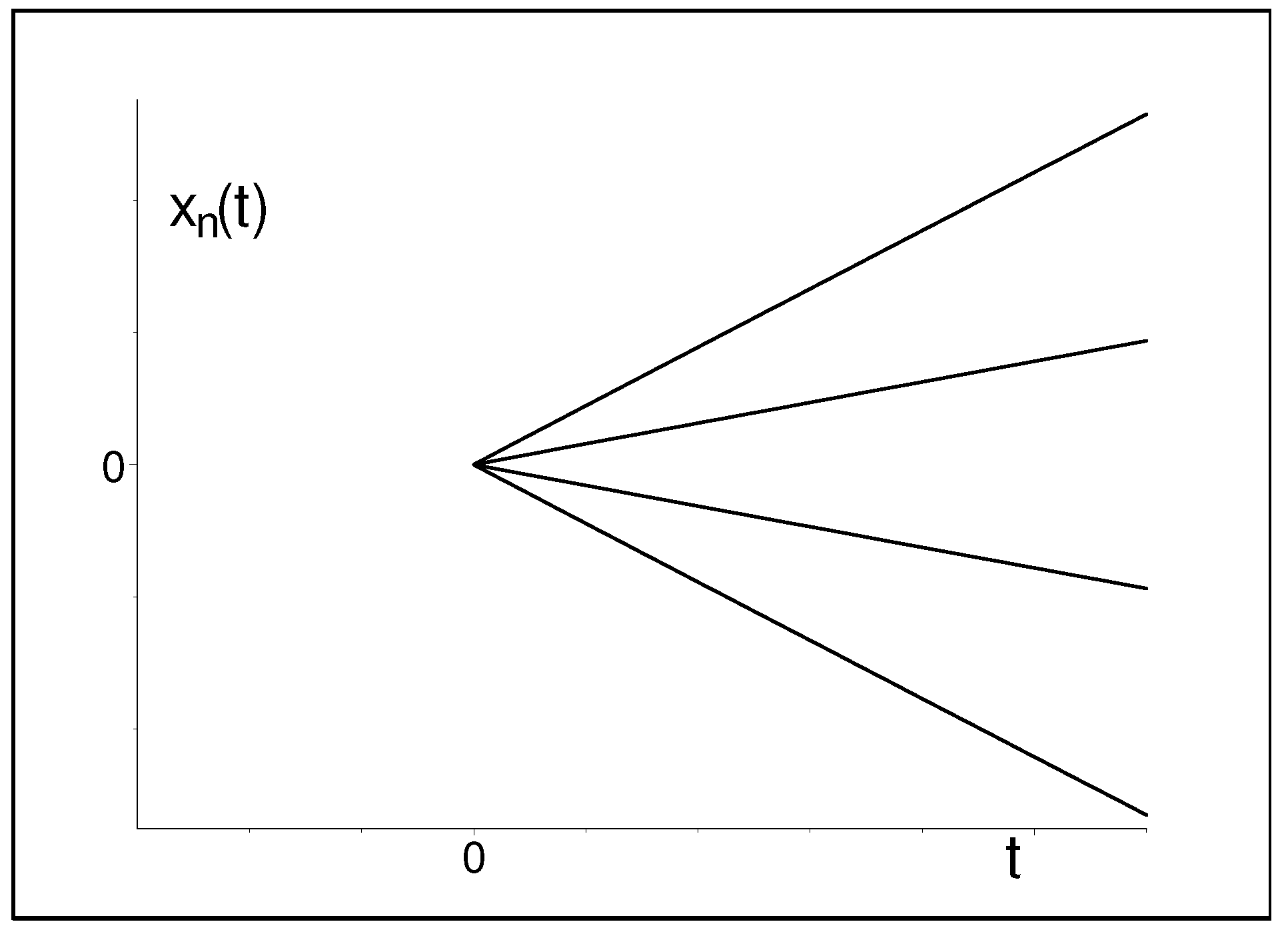
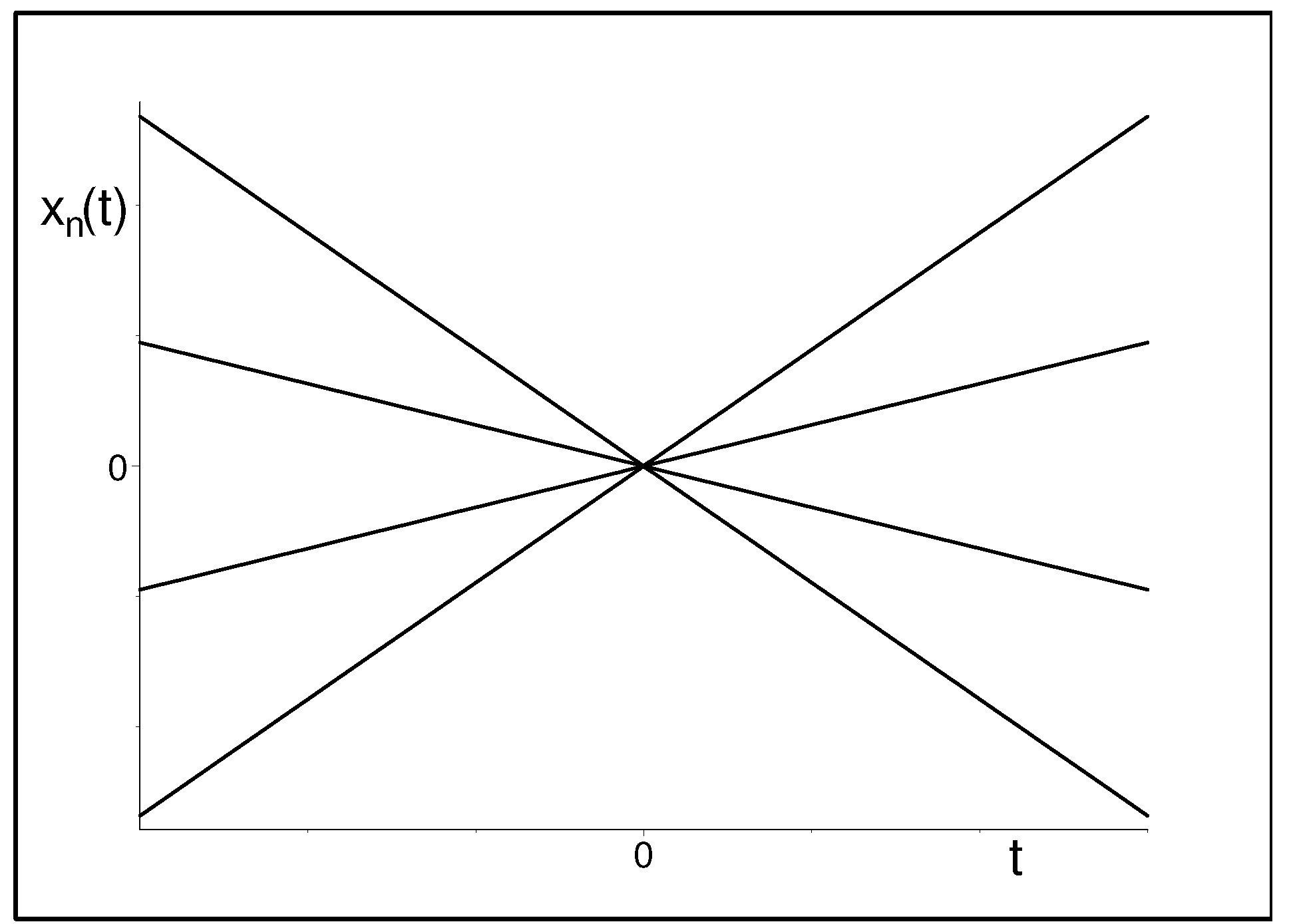
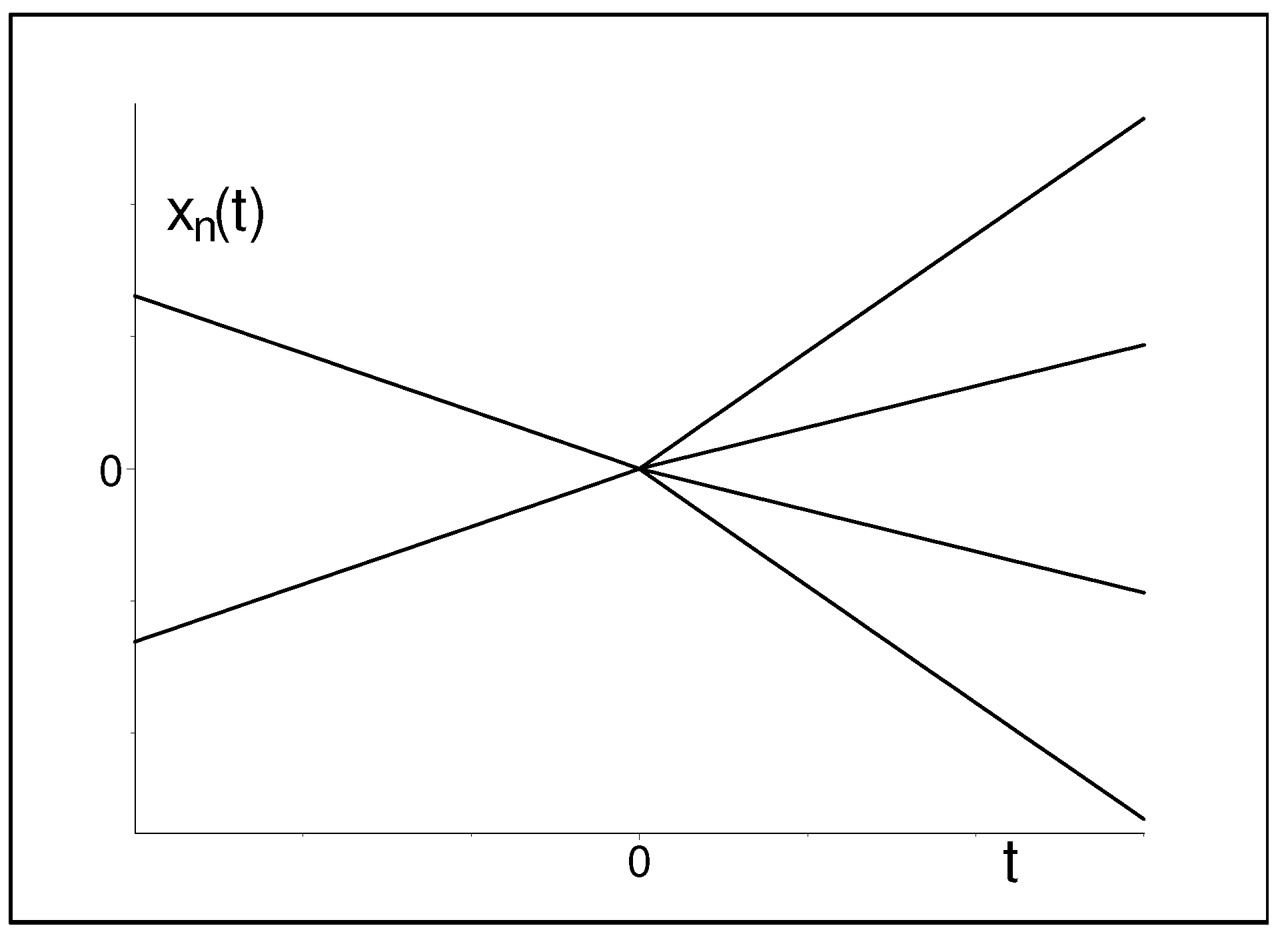


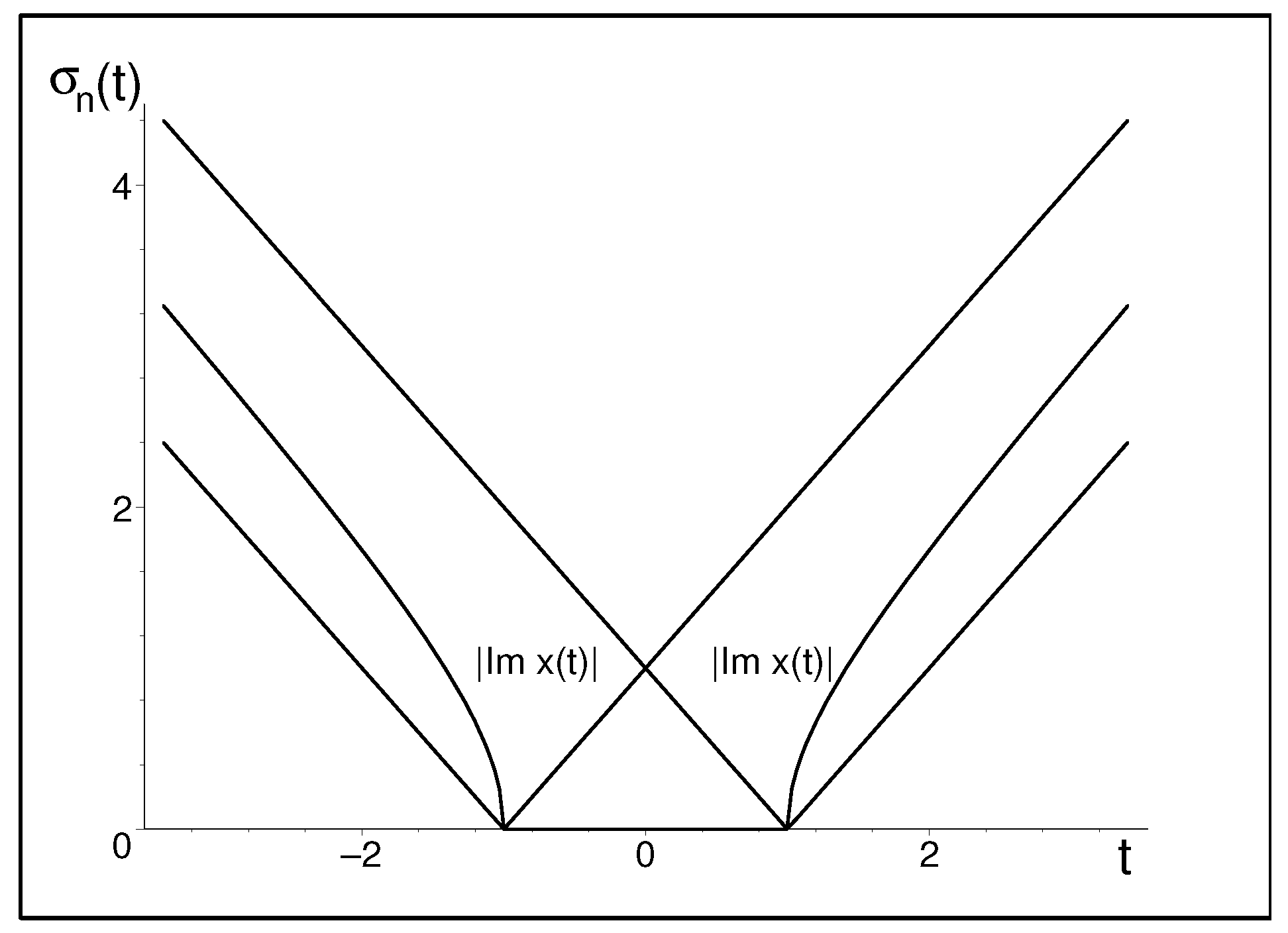
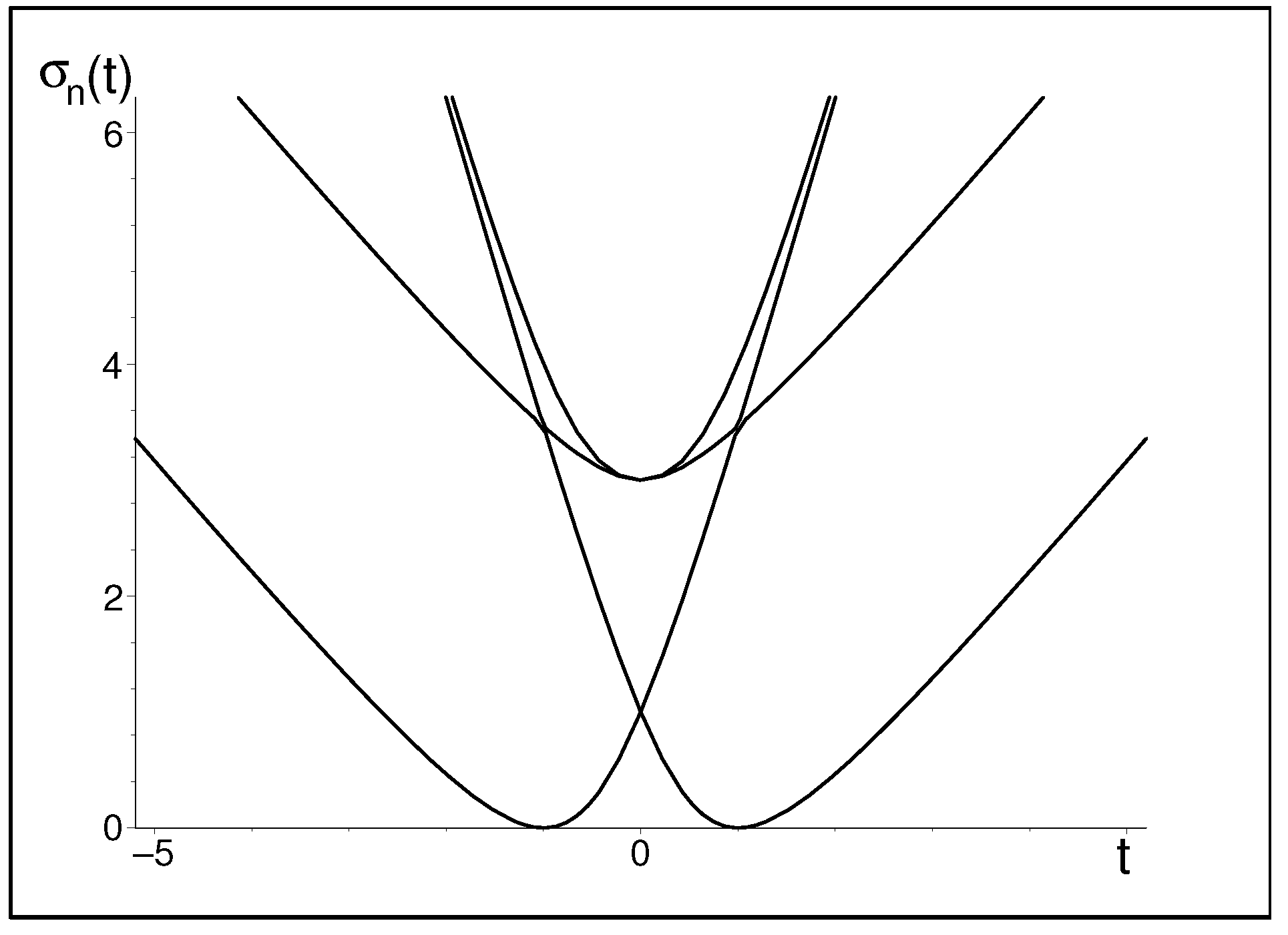
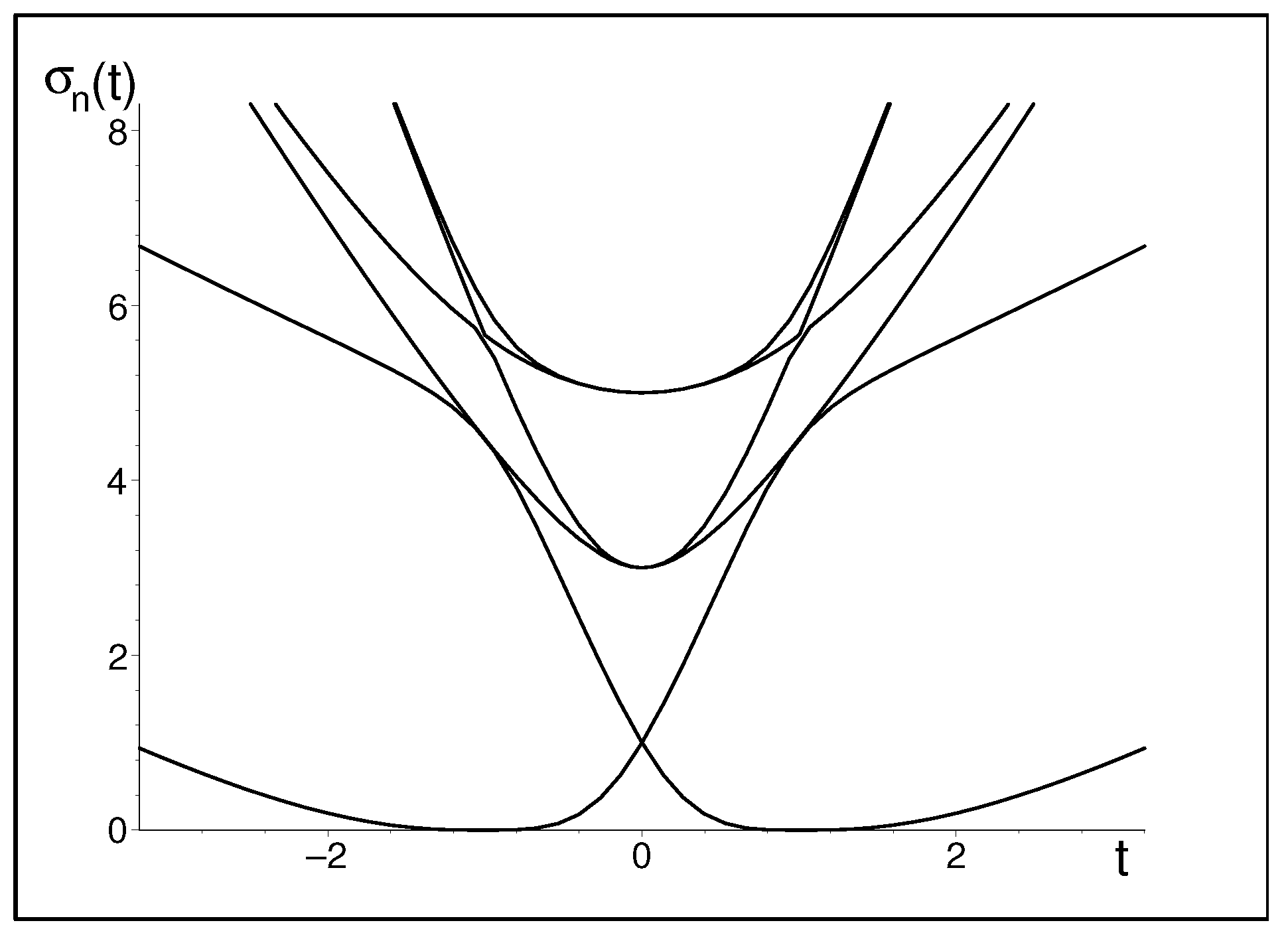
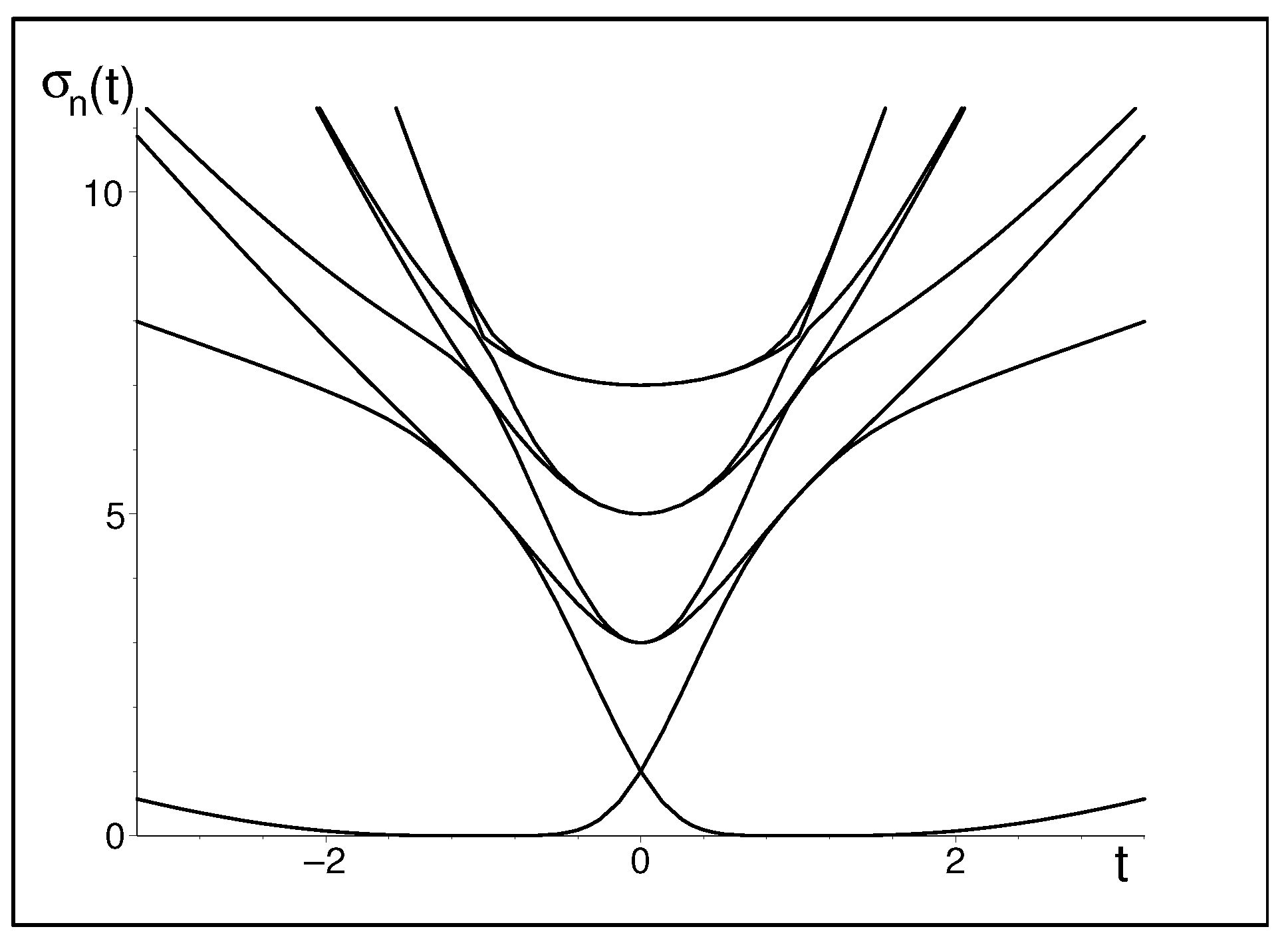
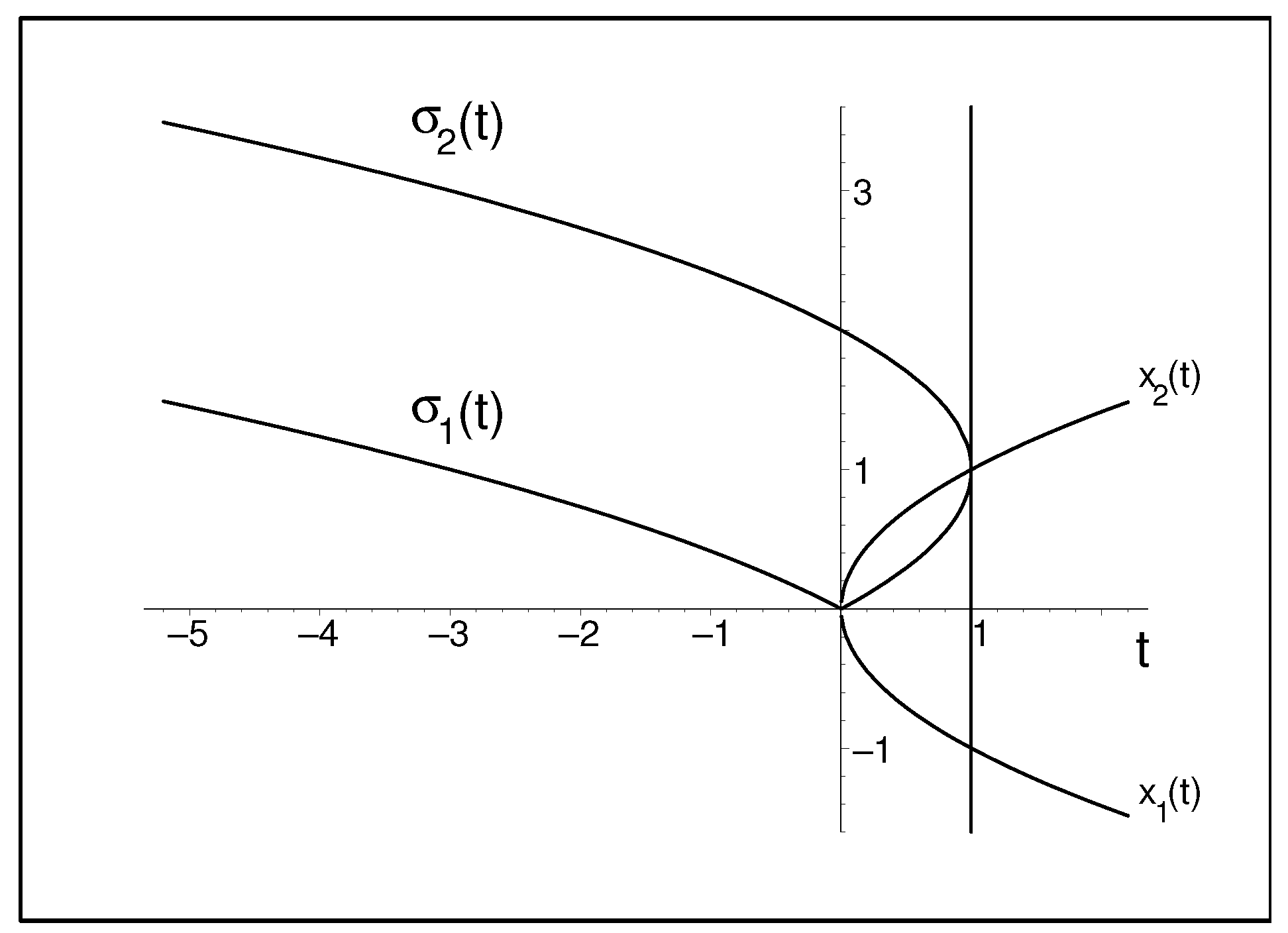
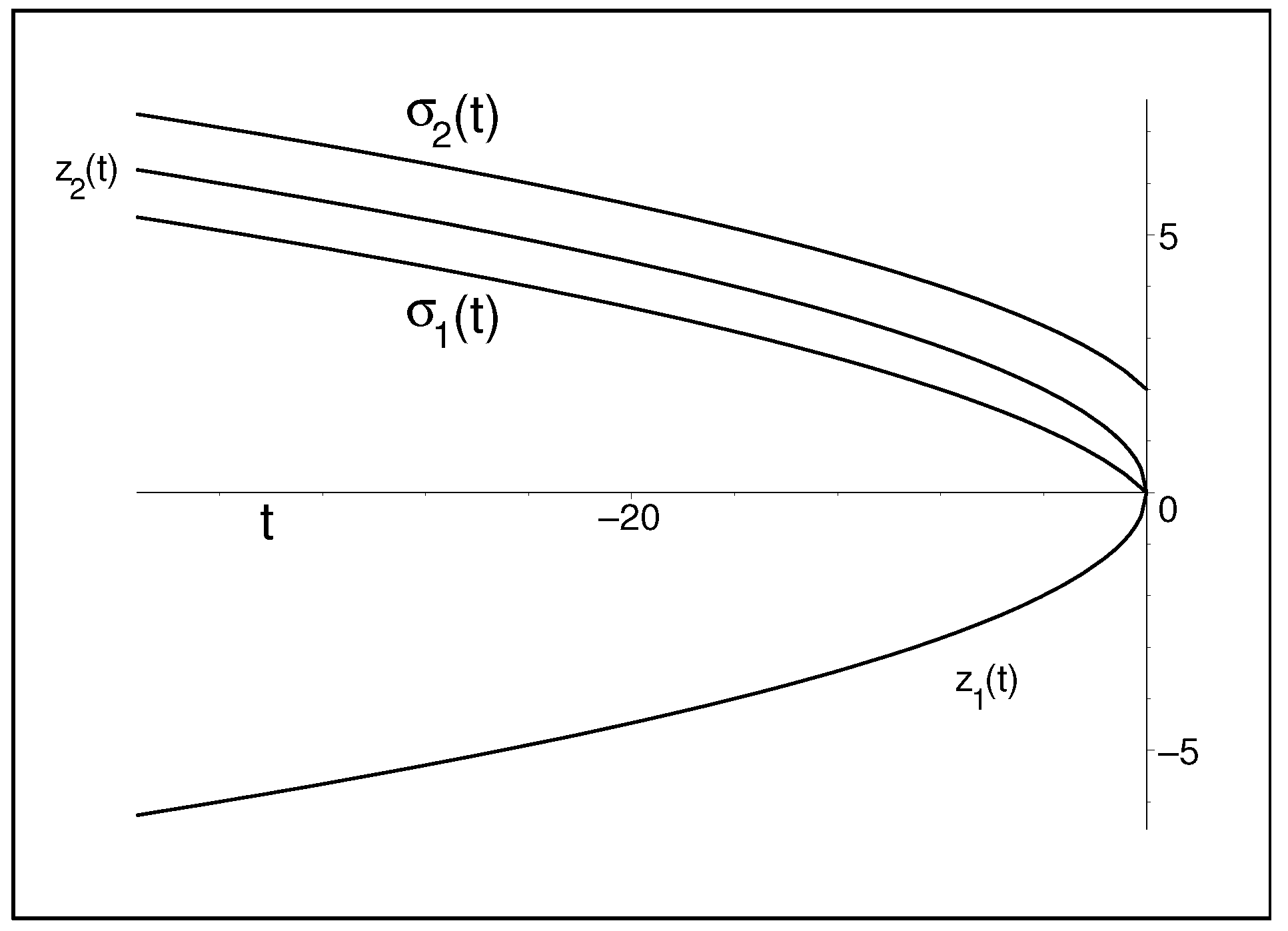
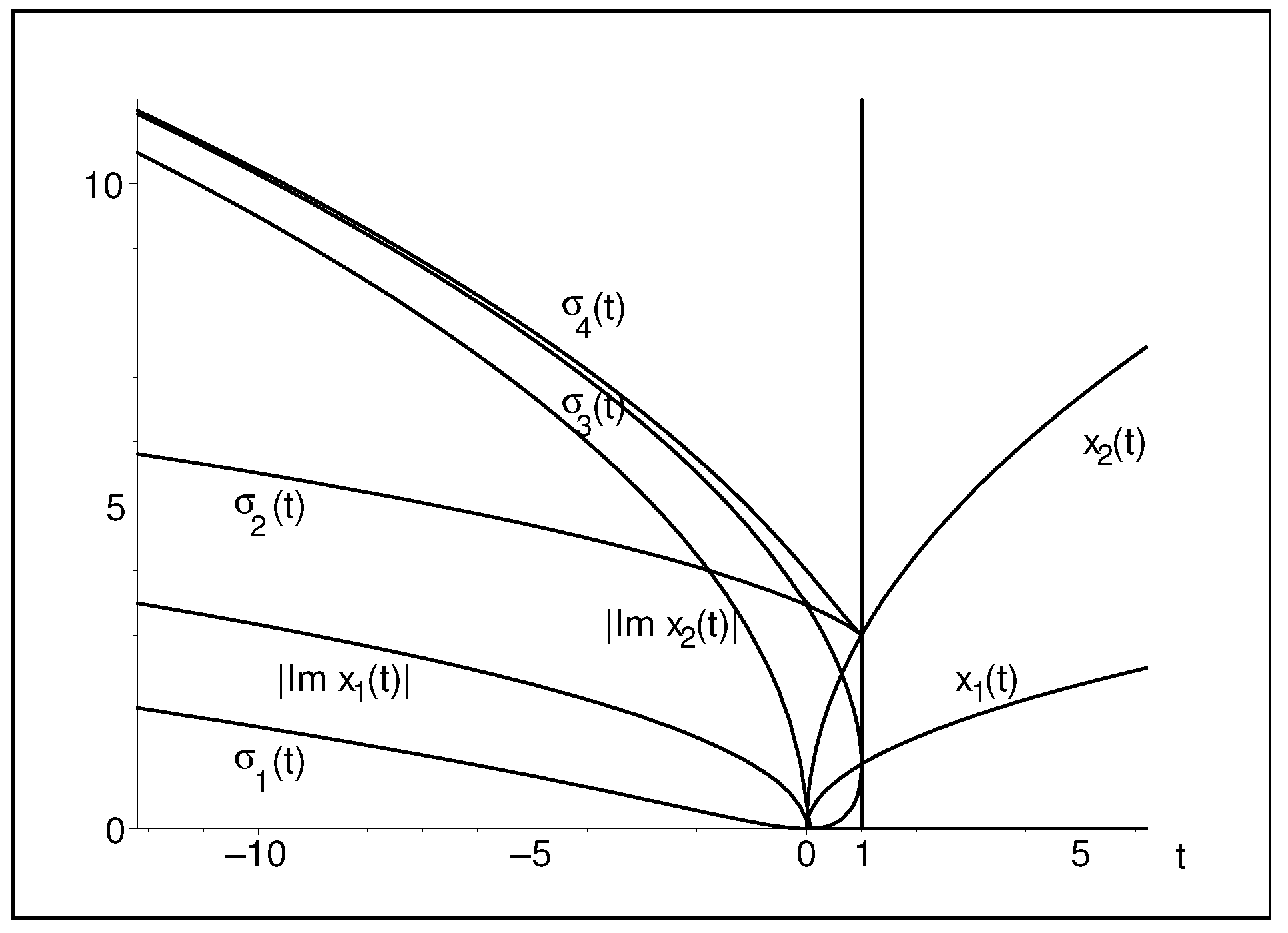
Disclaimer/Publisher’s Note: The statements, opinions and data contained in all publications are solely those of the individual author(s) and contributor(s) and not of MDPI and/or the editor(s). MDPI and/or the editor(s) disclaim responsibility for any injury to people or property resulting from any ideas, methods, instructions or products referred to in the content. |
© 2025 by the author. Licensee MDPI, Basel, Switzerland. This article is an open access article distributed under the terms and conditions of the Creative Commons Attribution (CC BY) license (https://creativecommons.org/licenses/by/4.0/).
Share and Cite
Znojil, M. Few-Grid-Point Simulations of Big Bang Singularity in Quantum Cosmology. Symmetry 2025, 17, 972. https://doi.org/10.3390/sym17060972
Znojil M. Few-Grid-Point Simulations of Big Bang Singularity in Quantum Cosmology. Symmetry. 2025; 17(6):972. https://doi.org/10.3390/sym17060972
Chicago/Turabian StyleZnojil, Miloslav. 2025. "Few-Grid-Point Simulations of Big Bang Singularity in Quantum Cosmology" Symmetry 17, no. 6: 972. https://doi.org/10.3390/sym17060972
APA StyleZnojil, M. (2025). Few-Grid-Point Simulations of Big Bang Singularity in Quantum Cosmology. Symmetry, 17(6), 972. https://doi.org/10.3390/sym17060972





